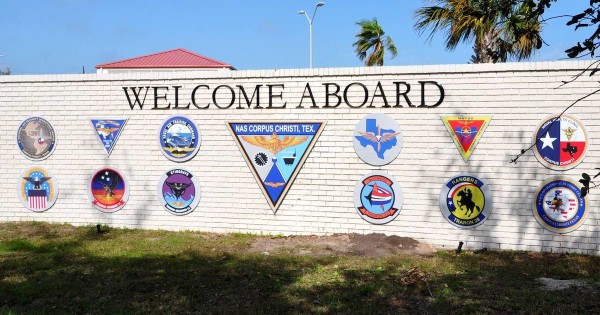On the morning of July 7, 2017, a mild-mannered 33-year-old Marine Corps veteran named Brian Easley walked into the Wells Fargo Bank on Windy Hill Road in the suburbs of Atlanta, Georgia.
He wore a grey sweater, had a short, tight haircut, and carried a backpack which he claimed was packed full of C-4 explosives. He had one demand: He wanted the $892 he was owed in disability payments from the Department of Veterans Affairs.
Easley was dead by day’s end, killed during a hostage negotiation after agreeing to let those inside the bank go free in exchange for a pack of Newport cigarettes. When his backpack was searched afterward, no explosives were found.
Now, the events of that day at the bank, and what led up to it, will be the basis for an upcoming drama starring John Boyega as Easley, along with Connie Britton, as the assignment editor at a local TV news station who spoke with the Marine veteran by phone during the incident. The two are joined by Michael K. Williams and Nicole Beharie, according to Deadline. Developed by Vox Media Studios’ Salmira Productions and Epic, 892 is directed by Abi Damaris Corbin and is currently in post-production.
The movie is based on a Task & Purpose feature article written by Aaron Gell in April 2018. It can be read in its entirety here. It was the result of seven months of reporting by Gell, who spoke to police officers, Easley’s family, and Marines who served alongside the former supply clerk during his two tours downrange, first to Kuwait in 2003, then to Iraq in 2005, and to veterans advocates, local activists, and law enforcement experts.
“Brian Easley made a terrible mistake in a desperate situation, but I believe that if it weren’t for the failures of so many institutions — the police, the media, the VA, the for-profit college industry — he’d still be alive,” Gell told Task & Purpose. “Easley fought for his country, and when he needed help, his country let him down.”
The story surrounding Easley’s death is complex, to say the least. It’d be easy, tempting even, to wrap a tidy narrative around it and tie it off as little more than a hostage situation that ended with the perpetrator’s death, but as Gell laid out in his original article, there’s much more to it.
There’s Easley’s mental health, and the care he received from the Department of Veterans Affairs due to his diagnoses of schizophrenia and paranoia.
There’s the stalled disability payments that contributed to his financial duress — the film’s name, 892, is a reference to the amount he received each month from the VA in the form of disability compensation.
He was explicit about that detail, and he was also exceedingly polite as he explained it, Gell wrote. But it was his calm demeanor that bank employees remembered most, and his almost apologetic tone as he described the events that led him to enter the bank that day, with the goal of somehow convincing the Department of Veterans Affairs to send him his monthly disability payments, which had stopped, and without which he was sure he’d soon be out on the street.
After allowing several employees to exit the building, Easley told the two remaining workers to lock the doors, and then he picked up the phone. He called the police to let them know what he’d done, and a local news station, where he spoke to the assignment editor for more than half an hour, recounting his story.
While on the phone with an assignment editor at the local TV station, Easley insisted that it was all an attempt to draw attention to the problems he was having with his disability payments — problems that he had been unable to get resolved through the VA.
As Gell wrote for Task & Purpose:
Easley insisted he didn’t want to harm anyone. “I already told them if I detonate this bomb, I’ll let them go first,” he promised. “These ladies are very nice, and they’ve been very helpful and supportive.” He said he had no intention of robbing the bank, and though an employee had fled leaving piles of cash just sitting out at their work station, he showed no interest in it. His focus was exclusively on his own money — that monthly disability payment from the VA.
“How much money are we talking about?” the editor asked.
“Not much,” Easley said. She pushed for a dollar figure.
“Eight hundred and ninety-two dollars,” he answered.
And, because nothing in the federal government is ever cut and dry, Easley’s story is also one of bureaucratic red tape: his disability compensation was cut off after he enrolled in a for-profit college located in a strip mall, and failed to complete his courses. This caused the VA to recoup those payments from Easley’s disability compensation.
It’s also the story of four veterans — Easley, the sniper who killed him, the tactical team commander, and the hostage negotiator — all of whom served in the Marines. And like any story, it brushes up against the issues of its time, from the history of racial tensions in the town where the incident took place and policing practices, to Easley’s struggles with isolation and a loss of identity after leaving the service.
It is, in a word, complicated, which also makes it ripe for a film adaptation, and with luck, an impactful one.
The basis for the film, ‘They didn’t have to kill him’: The death of Lance Corporal Brian Easley, by Aaron Gell can be read here.
More great stories on Task & Purpose
- All US troops are officially out of Afghanistan
- These are the 13 American military service members killed in Kabul
- Marine commander relieved over viral video calling out military leaders for Afghanistan withdrawal
- One of the most telling scenes in ‘Saving Private Ryan’ involved a sidelong glance at a sandwich
- Air Force special operators go from firefights to firefighting in California
- ‘This is what we live for’ — Air Force C-17 crews jump at the chance to help others in Afghan airlift
- This is the U.S. military equipment that likely ended up in Taliban hands
Want to write for Task & Purpose? Learn more here and be sure to check out more great stories on our homepage.

























